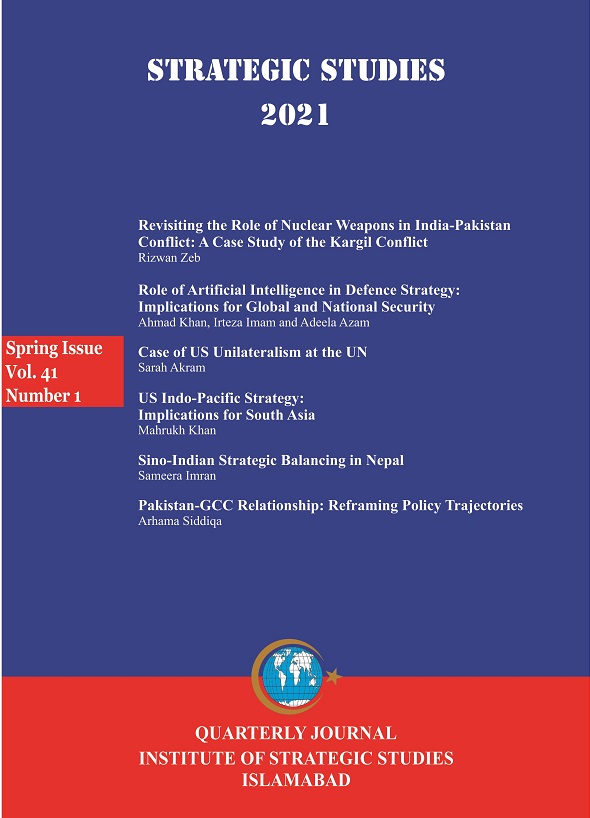Revisiting the Role of Nuclear Weapons in India-Pakistan Conflict: A Case Study of the Kargil Conflict
Keywords:
Kargil Conflict, India-Pakistan Relations, Brasstacks, Nuclear Conflict, USAbstract
The Kargil conflict is categorised as a “staircase nuclear conflict.” According to the literature, in such conflicts, the incentives for the first use of nuclear weapons are present. The Kargil conflict, along with the Cuban Missile Crisis between the US and the USSR and the 1969 Sino-Soviet border clash, are taken as the only incidents when two nuclear states fought each other since the advent of nuclear weapons. Contrary to the generally held belief, this paper argues that Kargil was not a nuclear conflict. This paper will raise some questions about the categorisation of Kargil as a nuclear conflict. Prime amongst them: what was the level of readiness and operationalisation of Pakistan’s nuclear weapons at the time of the Kargil operation? The paper argues that Kargil occurred too soon after the nuclearisation of India and Pakistan and that because it occurred one-year post-Indo-Pakistan nuclear tests should not elevate it to be a nuclear conflict. The paper further argues that there is a need for more rigorous analysis to work out criteria for how, when and why a conflict should be categorised and analysed as a nuclear conflict.

Published
How to Cite
Issue
Section
Copyright (c) 2022 Strategic Studies

This work is licensed under a Creative Commons Attribution-NonCommercial 4.0 International License.



